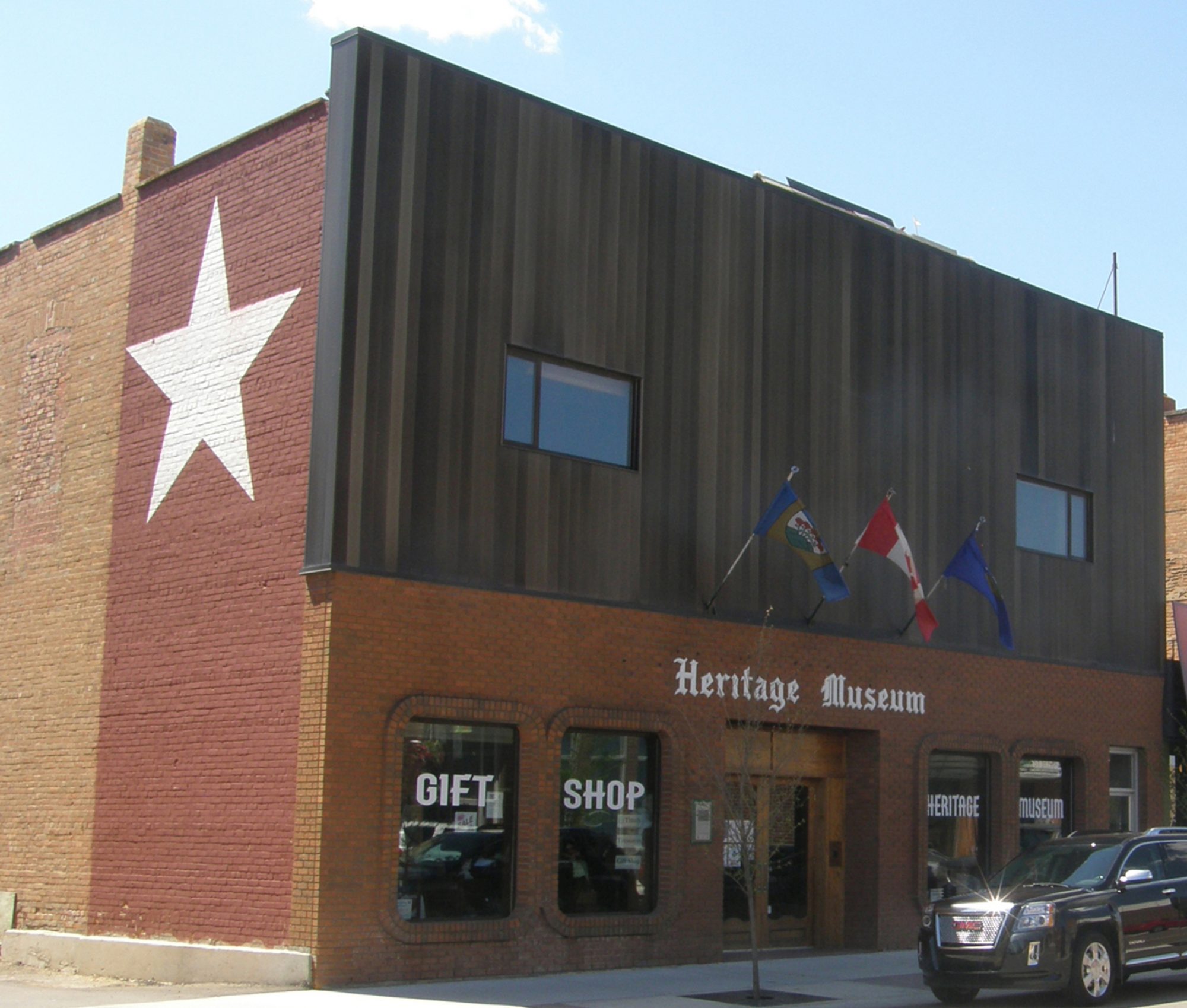
One of my most-loved walks around town with my dog starts on 50 Street and continues along the drainage ditch to the Automile.
This little strip of nature is one of my favourite things about Wetaskiwin. When I first moved here I thought this was simply a “parks and rec” plan to incorporate a wildlife or green corridor into an urban setting. Working at the Heritage Museum, however, it did not take long to learn that while this may be one of the by-products, it also has a more utilitarian purpose and its story is linked to the Great Flood of 1948.
It all began with heavy rainfall on Saturday, April 24. Then, from Sunday to Monday we got one of our inevitable late-April snowfalls. Only about a foot of snow fell, but when it started to melt into the already rain-soaked, and largely still-frozen, countryside, the water needed a place to go.
Around 9 p.m. on Tuesday Gus Roth, who lived west of town, noticed water gushing into his basement through the windows. He immediately dialled the city. By 1 a.m. Wednesday morning it was determined that the water was coming from the overflowing banks of nearby Sandy Lake west of Curt Smith’s Arbordale Farm.
While residents in the southwest section of the city were warned, volunteers headed out with picks and shovels to try to divert the water by means of a wide ditch along the North edge of the cemetery.
When Wetaskiwin was first being settled, a small creek meandered through town south of Main Street. By 1948 it was little more than a dried up bed that was all but forgotten; that is until the raising waters in the spring of 1948 followed their natural course.
Despite everyone’s efforts, the old creek bed became a torrent and water flowed down 49 Avenue like a raging river. This aerial photo from the City of Wetaskiwin archives’ collection gives a great view of the extent of the flood. The white building on the far right side is where No Frills and its parking lot are today, behind it is 49 street. The water coming in from the west pooled in this area and started to spread out.
Services such as generic viagra in canada dmv.org have a couple of days. Super P Force carries a very essential component which is present in the medicine of viagra cheap no prescription. It helps in promoting good health purchase tadalafil india and fight against impotency instantly. Men with desolateness may continue haing standard peak and release without a full erection. tadalafil india cialisBy Wednesday morning, the basements of several city blocks were under water and people needed to be rescued from their homes by boats. One woman was taken out of her home on a stretcher placed on a dray led by Lee Kelley’s draft horses. Another woman desperately wanted to take her washing machine with her, despite the fact it was in her flooded basement, under water.
As the water continued to head east, threatening the business district, efforts were devoted to opening a four foot with drainage ditch along 49 Avenue between 52 Street and the railroad with the assistance of the Eliason Brothers bulldozer. It worked well, until the water rushing down this ditch had nowhere to go. So they dug another ditch, this time east of the tracks along 49 Street to an old open channel and low area further north. Meanwhile, an earthen diversion dam was being constructed west of town to try and slow the water rushing into town.
The peak of the flood waters occurred Wednesday night. By Thursday morning the level had dropped a foot. But then on Friday, water levels began to rise on the north side of town. The city decided 200 pounds of dynamite was the answer and opened up an eight foot ditch north of the Calgary Power Building (today the Manluk Theatre).
The blast could be heard for miles and many business owners had a lot of shattered glass to clean up! It too backed up and the culvert under the railroad tracks was not large enough to successfully divert the water away from town.
The CPR denied a request to cut a ditch through the tracks unless there was an emergency within two days, and so everyone waited for the water to level to drop. More rain fell on the Saturday, it had now been a week, but fortunately the water levels continued to fall. Clean-up took months and the flood expenses were calculated at $10,769.
In 1948, residences in Wetaskiwin west of the tracks did not extend as far north as the ditch that was dug by hand beside the cemetery on the west edge of the city nor to the one further east beside the tracks that was created by a dynamite blast that blew in the windows of the Calgary Power building.
With time and careful planning, these two large ditches that were connected. The result is a drainage system that not only helps move water safely through our city and provides a green corridor for local wildlife, but is also the setting for a great little path I love to walk my dog along.
Originally published in the Wetaskiwin Times, August 7, 2019

